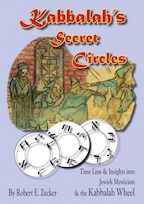Teraphim in Different Cultures
Teraphim in Other Cultures
 Sumerians
Sumerians
The Sumerians buried idols
under floors of houses and chambers where men lay sick, protect property
and from devil. They protect property and provide portection from
devil. Some archeologists compare them to the teraphim of Laba; and the
Penate of the Romans.
Egyptians
One of the largest class of
Egyptian amulets similar to kind Seldonos in "De Diis Syriis" alludes to
golden TERAPHIM consecrated to a special star or planet known in Egypt.
Other TERAPHIM were mummified heads each with a gold plate under its
tongue on which were engraved "magic words" These Jivaro skulls were
mounted on walls and talked to at certain times. (We Are Not the First, p
120) See "Shabti"
Babylonians
The Babylonian (Teraphim) ritual:
"Whether it be an evil ghost
or an evil spirit or an evil spook or an evil ghoul or an evil god or
an evil Croucher or a LAMSHTU or a LABASU or the Seizer or LILU, LILITH;
or a Handmaid of Lilu, or the Hand-of-a-god; or the Hand-of-a-goddess;,
or Epidemic,... of Plague-demon; or the Bad-luck-demon {Lit, 'he who
offers the bad things of life'} or Death or Heat or Fever or the killer,
... which does harm to a man, in a man's house... (“Greatness That was Babylon,” p. 31)
In the private houses or
bedrooms of ancient Babylon were protective figures were either standing
at the doorway or buried under the threshold.
At Ur, for example, clay
figures were found in boxes of burnt brick placed under the floor
against the walls; these boxes, provided with lids, had one end open,
facing the center of the room, which the figures watched and guarded.
These particular figures at
Ur had been given a lime-wash and then painted either black and red,
were of various kinds. There were human figures clad in a garment
composed of a pointed hat and a long robe pained with scales: these were
fish-men, creatures mentioned in mythology.
Others had figures of human
bodies and heads and wings of birds, some were long-bearded, long-robed,
some with closed hands folded across the breast as though grasping some
object. Others were clay representation of the Mushrushshu; or red
dragon, with body of a dog, head of a serpent and long tail..
(“Greatness Babylon,” p. 301)These particular
figures at Ur had been given a lime-wash and then painted either black
and red, were of various kinds. There were human figures clad in a
garment composed of a pointed hat and a long robe pained with scales:
these were fish-men, creatures mentioned in mythology. Others had
figures of human bodies and heads and wings of birds, some were
long-bearded, long-robed =, some with closed hands folded across the
breast as though grasping some object. Others were clay representation
of the MUSHRUSHSHU or red dragon, with body of a dog, head of a serpent
and long tail. ("Greatness Babylon," p. 301) Seem to been same character
as "PAPSUKKAL" figure in Babylonian amulet.
Assyrians
The Assyrians kept images of
gods in the house, which werebelieved to have power of warding off
spirits. The images of gods kept in the house, believed to have power of
warding off spirits. Arab (tarifa) = live a life of ease and plenty tho
origin perhaps an idol, afterwards and almost exclusively a kind of
charm of Lares and Penates, household gods of Rome. (Magic Divin. Demon,
35)
Greece
In Ancient Greece, they were
the '.i.Tselem;' (.i.Image;' in Hebrew), The TERAPHIM can be compared
with the Golem. (Magic, History & Rites) p. 140
Arabs
(tarifa) = live a life of
ease and plenty, although origin perhaps an idol, afterwards and almost
exclusively a kind of charm of Lares and Penates, household gods of
Romans (“Magic Divin. Demon”, p. 35)
"the worshippers of the
Teraphim claim that as the light of the stars filled the carved statute,
it was put en rapport with the intelligence of those distant stars and
planets who used the statue as an instrument. It is in this manner that
the Teraphim taught people many useful arts and sciences." (Maimonides,
p.1135-1204)
Saharon
Acharm
or amulet probably made of metal and had the form of a cresent, i.e.
cresent moon. Worn by women (Is iii.18) and by kings (Judges viii,26)
and tied to necks of camels (Judges 21) to protect from Evil Eye.
Favorite among people of western Asia. Represented strength and
protection of the waxing, not waning moon. Himyarites and other peoples
of Arabia added a star to it. Abyssinians adopted both as sacred
emblems. Turks did also (Budge, "Amulet")
Thay Phap
The same way Annamese
sorcerers, the "thay phap" employ a figure in human form, made of straw,
wood or paper, which they animate with their "breath" and which they
cover with magical formula. These dolls, real "golem", become "living"
and can execute wishes of the maker. They can steal, kill, discover
secrets and carry out vengences.
Chinese Living Statues
Chinese Talismans statuettes
in clay, paper, wood or jade fashioned by the Tao Nio witches to "give
them life" the witch places inside of them not only the reproductions of
vital organs- heart, liver, lungs- but also a small living animal, a
bird, insect or reptile. The soul which leaves the animal when it dies
will inhabit the talisman.


